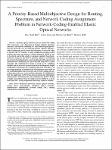Item Infomation
Full metadata record
| DC Field | Value | Language |
|---|---|---|
| dc.contributor.author | Dao Thanh Hai | - |
| dc.contributor.other | L. H. Chau | - |
| dc.contributor.other | N. T. Hung | - |
| dc.date.accessioned | 2020-04-29T07:52:11Z | - |
| dc.date.available | 2020-04-29T07:52:11Z | - |
| dc.date.issued | 2019 | - |
| dc.identifier.other | bccb00149 | - |
| dc.identifier.uri | https://dlib.phenikaa-uni.edu.vn/handle/PNK/215 | - |
| dc.description.abstract | In this study, we present a low-cost and simple method to treat spent lead–acid battery wastewater using quicklime and slaked lime. The sulfate and lead were successfully removed using the precipitation method. The structure of quicklime, slaked lime, and resultant residues were measured by X-ray diffraction. The obtained results show that the sulfate removal efficiencies were more than 97% for both quicklime and slaked lime and the lead removal efficiencies were 49% for quicklime and 53% for slaked lime in a non-carbonation process. After the carbonation step, the sulfate removal efficiencies were slightly decreased but the lead removal efficiencies were 68.4% for quicklime and 69.3% for slaked lime which were significantly increased compared with the non-carbonation process. This result suggested that quicklime, slaked lime, and carbon dioxide can be a potential candidate for the removal of sulfate and lead from industrial wastewater treatment. | - |
| dc.publisher | MDPI | - |
| dc.title | A Priority-Based Multiobjective Design for Routing, Spectrum, and Network Coding Assignment Problem in Network-Coding-Enabled Elastic Optical Networks IEEE Systems Journal | - |
| eperson.identifier.doi | https://doi.org/10.1109/JSYST.2019.2938590 | - |
| Appears in Collections | ||
| Bài báo khoa học | ||
Files in This Item:

